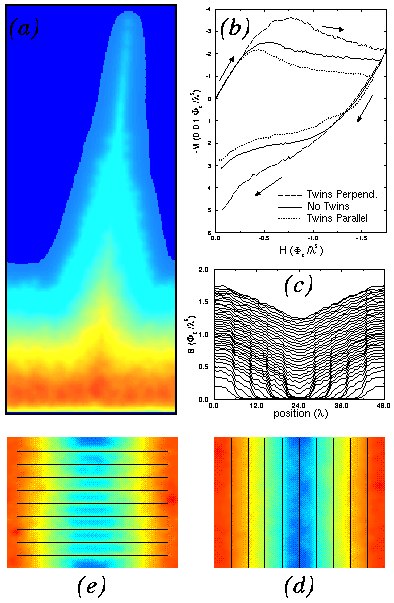

Bz(x,y) along a TB at theta = 85 degrees with fpTB / fp = 0.05, fp = 0.4f0, and np = 152/(lambda2). Bz(x,y) exhibits a ``flame'' front profile. The same-color contours of constant Bz indicate the current flow around the twin. The images (a,d,e) show Bz, which is obtained by approximating the field due to each vortex by a monopole located 1 lambda below the surface and computing Bz(x,y) at z = 0.6 lambda above the surface. (b) M(H(t)) for heavily twinned samples; the TBs are 5.6 lambda apart. TBs, indicated by black lines in (d) and (e), act as barriers (for TBs perpendicular to the vortex flow as in (d)) or as easy-flow channels (for TBs parallel to the vortex flow as in (e)). For comparison, M(H(t)) for an untwinned sample is also shown in (b). In (b-e), fpTB / fp = 0.1, fp = 0.2 f0, and np = 496 /(lambda2). (c) B(x) for the sample shown in (d). Notice the sudden decrease in B(x) (leading to high-currents) at each of the TBs. This ``terraced'' B(x) profile produces a periodic array of alternating high and low current regions. In (c,d) the TBs act as a series of ``flux dams''.